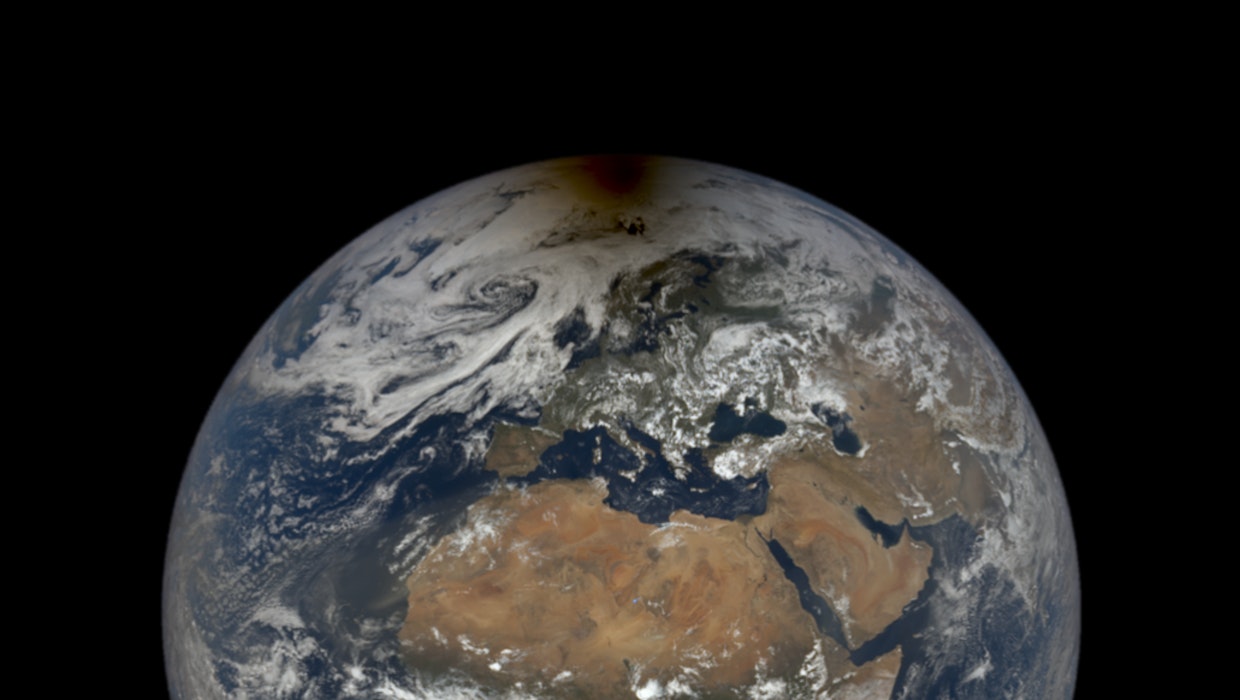
Solar eclipse on Earth. (Photo: NASA Goddard Space Flight Center/Lisa Pogue and Greg Shera/Ernie Wright/Alison Gold)
NASA has released a stunning image from its legendary telescope that shows the moon casting a shadow over the North Pole during a solar eclipse
Each of us has certainly observed one or another solar eclipse – at least in part – at some point. The total solar eclipse of August 11, 1999, which can also be seen in Central Europe, has probably stuck in the memory of many. When viewed from the Earth, the (full) moon moves partially or completely in front of the sun. covers it. The phenomenon of solar eclipses on Earth looks different than in space. Here you can see the moon’s shadow moving across the Earth’s surface.
Epic orbits the Earth at 1.5 million km
NASA has now published such a recording of the solar eclipse on June 10, 2021. The image was taken by the Earth Polychromatic Imager Camera (Epic) and telescope system aboard the DSCOVR satellite. The satellite orbits the Earth at a distance of about 1.5 million km – in the direction of the Sun. This corresponds to the so-called inner Lagrangian point L1. Scientists are already examining Earth’s vegetation, cloud formations, or ozone values based on images recorded by Epic.
Every now and then, according to NASA in their messageBut there is a possibility to take a solar eclipse with you. Images of the sunlit half of the Earth from a distance four times greater than the moon’s orbit always presents surprises. Occasionally the moon enters our field of view or the moon casts a shadow on Earth,” explains Adam Szabo, DSCOVR Administrator at NASA.
The image shows the moon’s shadow over the North Pole. During the solar eclipse on June 10, there was only a small percentage coverage in our latitudes. The next solar eclipse, which will cover about 30 percent in Germany, will occur on October 25, 2022. It is assumed that the next total solar eclipse will occur, in which the moon’s shadow moves over central Europe Not until September 3, 2081 to be observed.
You can find more interesting pictures of the legendary telescope – including “telescope pictures” of the moon Here.
You may also be interested in it

“Problem solver. Proud twitter specialist. Travel aficionado. Introvert. Coffee trailblazer. Professional zombie ninja. Extreme gamer.”




More Stories
With a surprise in the case: a strange cell phone from Nokia was introduced
PlayStation Stars: what it is, how it works and what it offers to its users | Sony | video games | tdex | revtli | the answers
t3n – Digital Pioneers | digital business magazine